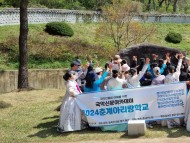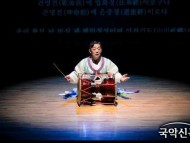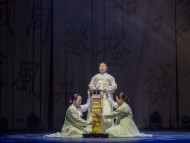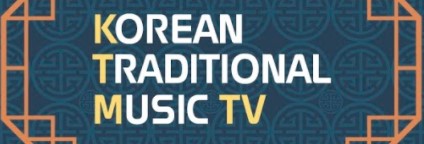2024.04.19 (금)
초록
일제강점기 우리 음악계는 신민요라는 서양음악의 영향을 받은 음악 사조가 발생·유행하면서 전환기를 맞게 된다. 국악계와 대중음악계가 모두 신민요에 주목하며 일시적 경향으로서 신민요가 아닌 대세적 음악으로 신민요를 수용하게 된 것이다. 특히 1934년 로 데뷔한 선우일선은 이러한 신민요의 대중적 입지를 공고히 한 대표적인 가수로 1940년대 초까지 활동하면서 많은 신민요와 민요, 가요곡을 발표하였다. 또한 선우일선의 신민요는 오늘날까지 남북한에서 민요 혹은 가요라는 이름으로 널리 보급되며 불리고 있다. 이 논문은 선우일선 신민요의 음악적 특징을 비롯해, 오늘날 선우일선의 신민요가 어떤 방식으로 수용되고 있는지를 연구하는 것을 그 목표로 하고 있다.
선우일선이 부른 신민요의 특징 중 하나는 토속적인 단어를 사용하거나 순 우리말의 입소리를 가장 잘 활용한 소리꾼이라는 것으로 언어선택의 탁월성을 들 수 있다. 전달성의 어려움 때문에 ‘고어’ 내지 ‘토속어’를 노래속에 담아내는 것이 쉽지 않음에도 선우일선의 신민요속에는 아름다운 옛 언어들이 자연스럽게 노랫말로 사용되고 있다.
선우일선 신민요 선법의 특징은 경토리의 곡들이 대부분이고 가끔 메나리 토리와 육자배기 토리도 보인다는 점이다. 이는 선우일선이 경서도 소리에 능통했다는 뜻인데, 민요조로 된 서도잡가 , 경기민요 , , 과 메나리조 민요 , , 등 많은 민요음반을 남겼다는 사실에서 확인된다. 반면 유행가를 많이 부르지 않은 덕분에 비슷한 시기에 활동한 다른 신민요 가수와 달리 일본식 요나누키 음계가 주를 이루는 곡은 거의 없으며, 장음계와 화성 단음계를 이용한 흔적도 보인다.
선우일선의 신민요 가운데 가장 많이 보이는 선법은 경토리 계열이며 이러한 경토리 계열의 신민요는 주로 신경토리와 신반경토리로 신민요로 나뉜다.
선우일선의 신민요 가운데 오늘날까지 활발히 전승되고 있는 곡은 , , , , 등 약 10여곡이다. 하지만 그 모습을 제대로 간직한 채 전승되는 곡이 있는가 하면 아예 다른 느낌의 곡으로 변화하여 불리고 있는 곡들도 있다.(중략)
The musical world of Korea was at a turning point, as Sinminyo(new folksong), the trend of music affected by western music, emerged and became popular during the Japanese Colonial Period.
The Korean classical music circle and the Korean popular music circle all have accepted Sinminyo, noting its value, not in a passing phase but in the mainstream.
Particularly, Seonwooilseon who debuted back in 1934 with the song [Catching the flowers], made Sinminyo become widely popular and continued her singing career, releasing Sinminyo, folk songs, and popular songs, as a representative singer until the early 1940’s
Also, Seonwooilseon’s Sinminyo, widely known as a folk song or a popular music in South and North Korea to this day, is still sung.
In this thesis, the goal is to gain a understanding of how Seonwooilseon’s Sinminyo has been accepted and the characteristics of Seonwooilseon’s Sinminyo.
One of the characteristics of Seonwooilseon’s Sinminyo is her excellent choice for the language, as a singer using indigenous terms and expressions as well as YIBSORY of pure Korean words.
Though it is not easy to express archaic words or indigenous words through the songs due to the difficulty of communicating ideas and feelings, beautiful traditional words are naturally being used in her lyrics.
The mode of Seonwooilseon’s Sinminyo features that many of her songs are Gyeongtori, and some are Menaritori and yukjabaegitori.
This means Seonwooilseon was a woman versed in Gyeonseodosori, and this can be confirmed that she released many records of folk songs such as from Seodojapga, , , from Gyeonggiminyo, , , from Menariminyo, and so forth..
On the other hand, because she didn’t sing many popular songs, unlike other Sinminyo singers around the same time, few of her songs had Japanese Yonanooki scale and some even show major scales and harmonic minor scales.
The most remarkable mode of her Sinminy is in Gyeongtori category, and this kind of Sinminy is mainly divided into Singyeongtori and Sinbangyeongtori.
So far, about ten songs such as , , , , habe been inherited among Seonwooilseon‘s Sinminyo, but some have been sung in original versions while others have been changed to new versions."
Of these, and are inherited into and from Gyeonggiminyo, into from Seodominyo. However, they are inherited not in original versions but in new versions, for political reasons or melodic complexity.
- [] 제42회 전주대사습놀이 학생전국대회(5/18∼6/2)
- [] 제50회 전주대사습놀이 전국대회(5/18~6/3)
- [] 제4회 함양 전국국악경연대회(05/12)
- [] 제18회 대한민국 전통예술무용·연희대제전(06/09)<br>무용(전통무용…
- [] 제48회 부산동래 전국전통예술경연대회(06/15-16)(무용.기악)
- [] 제1회충남전국청소년국악경연대회(05/04)(판소리.기악.타악)
- [] <br>[광주]제21회 대한민국 가야금병창대제전(06/16)
- [] 제18회 과천전국경기소리경창대회(05/04)
- 제11회곡성 통일전국종합예술대전(06/15-16)
- [] 제24회 인천국악대제전 전국국악경연대회(05/25-26)
- [] 제26회 창원야철전국국악대전(07/06- 07)
- [] 2024 무안장애인 승달국악대제전(06/01-02)
- [] 제22회 무안전국승달국악대제전(06/01-02)
- [] 제10회 전국공주아리랑민요경창대회(05/26)
- [] 제17회 상주전국국악경연대회(05/19)(성악/무용·연희/기악)
- [] 제10회 전국밀양아리랑경창대회(05/26)
- [] 제21회 강남전국국악경연대회(05/22)(무용/타악/판소리/민요)
- [] 제26회 서편제보성소리축제 전국판소리 고수 경연대회(05/04-05)
- [] [순천]제10회 낙안읍성 전국 국악대전(04/27-28)
- [] 제29회 안산전국청소년국악경연대회(05/26)
- [] 제26회(통합58회) 여수진남전국국악경연대회(05/18-19)
- [] 제51회 대한민국 춘향국악대전 경연대회(05/05)(05/11-12)
- [] 제33회 고령전국우륵가야금경연대회(04/26-27)
- [] [부평]제8회 전국 청소년국악경연대회(05/11)(관악/현악/성악)
- [] 제22회 구례전국가야금경연대회(05/04-05)
- [완도]제24회 장보고국악대전 전국경연대회(05/05-06)(무용/판소리…
- [] 제4회 금천정조대왕맞이전국청소년국악경연대회(04/13-14)
- [] [세종시]제10회 통일기원 세종전국국악경연대회(04/06-07)
- [] [전주]제44회 전국고수대회(04/20-21)
-

[금요연재] 도자의 여로(141)<br>분청상감대호편
작지만 문양이 이채로워 이규진(편고재 주인) 명품 청자를 생산했던 강진과 부안이 쇠퇴한 원인으로는 여러 가지를 들 수 있다. 그 중에는 고려 말의 혼란한 정국이라든...
-

[수요연재] 한글서예로 읽는 우리음악 사설(188)<br>원주어리랑, 산은 멀고 골은…
원주어리랑을 쓰다. 한얼이종선 (2024, 문양지에 먹, 34 × 34cm) 어리랑 어리랑 어러리요 어리랑 고개로 넘어간다. ...
-

[수요연재] 이무성 화백의 춤새(87)<br> 정인삼 명인의 '신칼대신무' 춤사위
신칼대신무 신칼대신무는 무속장단과 巫具를 활용한 재인의 춤으로, 장단과 움직임의 법도 있는 만남을 잘 보여주는 춤이다. 구한말 화성재인청에서 가르친 50여 가지의...
-

[화요연재] 무세중과 전위예술(9) <BR>김세중의 한국민속가면무극 춤사위 발표회19…
멍석 위에서 민속극에 뜻을 둔 이래 가장 절실했던 것은 둔한 몸을 가지고 직접 춤을 익혀야 한다는 것이다. 우리들 생활의 분신의 하나인 전통 민속극과 좀처럼 사귀어...
-

[월요연재] 이윤선의 남도문화 기행(140)<br>잔인한 적군의 시신까지 거든 바다의…
왜덕산(倭德山)의 비밀 피아를 나누지 않고 위령 바다사람들 심성 깃들어 왜군에도 그러해야 했던 섬과 바다의 민속 관념은 인류의 박애 정신 아닐까 교착상태 빠진 한·일 문...
-

[수요연재] 한글서예로 읽는 우리음악 사설(188)
갑진년 사월에 강원도 아리랑을 쓰다 오거서루주인 이종선 (2024, 한지에 먹,48 × 56cm) ...
-

[Pick리뷰] 이 시대의 새로운 춘향가- ‘틂:Lost&Found’
2024 쿼드초이스_틂 (사진=서울문화재단 대학로극장 쿼드) [국악신문 정수현 전문기자]=대학로극장 쿼드의 ‘쿼드초이스’가 다채...
-

[Pick리뷰] 세 악단의 조화로운 하모니, ‘하나 되어’
지난 4일, 국립국악원은 국립국악원 창작악단, KBS국악관현악단, 전북특별자치도립국악원 관현악단 118명으로 구성된 연합 관현악단 무대 ‘하나되어’를 국...
-

[인터뷰] 김경혜의 '시간의 얼굴' 작품전, 16일 개막
칠순을 넘어서는 길목에서 중견작가 김경혜(영남이공대 명예교수) 작가의 열번째 작품전이 오는 16일부터 25일까지 10일간 대구시 중구 슈바빙 갤러리에서 열린다.전시되는총 50여 개...
-

[Pick리뷰] 국립국악관현악단의 관현악시리즈 III ‘한국의 숨결’
국립국악관현악단의 관현악시리즈 III ‘한국의 숨결’이 KBS국악관현악단 상임지휘자 박상후의 지휘로 국립극장 해오름극장에서 펼쳐졌다. (사진=국립국악관현악단...
-

[PICK인터뷰] 국악인생 60여년, 한상일 대구시립국악단 예술감독
한상일(1955~) 대구시립국악단 예술감독 및 상임지휘자는 국악에 입문한 지 올해로 60여 년을 맞는다. 때 맞춰 지난 1월 25일 서울문화투데이 신문에서 선정하는 제15회 문화대...
-

[Pick리뷰] 명연주자 시리즈 ‘국악관현악-공존(共存)’
[국악신문 정수현 전문기자]=지난 3월 22일, 세종문화회관 M씨어터에서 서울시국악관현악단 2024 명연주자 시리즈 ‘공존(共存)’ 무대가 펼쳐졌다. ‘명연주자 시리...
-

[Pick리뷰] 소리극 ‘두아-유월의 눈’
[국악신문 정수현 전문기자]=지난 12일부터 22일, 국립정동극장은 대표 기획공연 사업 ’창작ing’의 두 번째 작품, 소리극 ‘두아:유월의 눈’을 무대에 올렸다. ‘두아:...
-

한류의 의외의 원류? ‘일본아리랑’에 놀라
한국을 대표하는 음곡 ‘아리랑’. "아리랑 아리랑 아라리요 아리랑 고개를 넘어간다...”라는 노래다. 각종 스포츠 대회나 정상회담 만찬회 등 공식 행사에서는 어김없이 연주되...
-

[인터뷰] 이즘한글서예가전 신인작가 이광호 작가의 시선
봄바람을 타고 13일 인사동 한국미술관에서 개최되는 네번째이즘한글서예가전에서 출품한 30명의 작가 중 가장 젊은 신인작가라고 한얼 회장이 소개를 한 3분의 작가 중 이광호(43세)...
-

[Pick리뷰] 전통 탄탄한 국악관현악: ‘작곡가 이강덕
[국악신문 정수현 전문기자] =국립국악원 창작악단은 지난 7~8일 기획공연 ‘작곡가 시리즈 Ⅲ’을 선보였다. 작곡가 시리즈는 창작국악의 토대가 된 작곡가를 선정해 의미를 되...






























